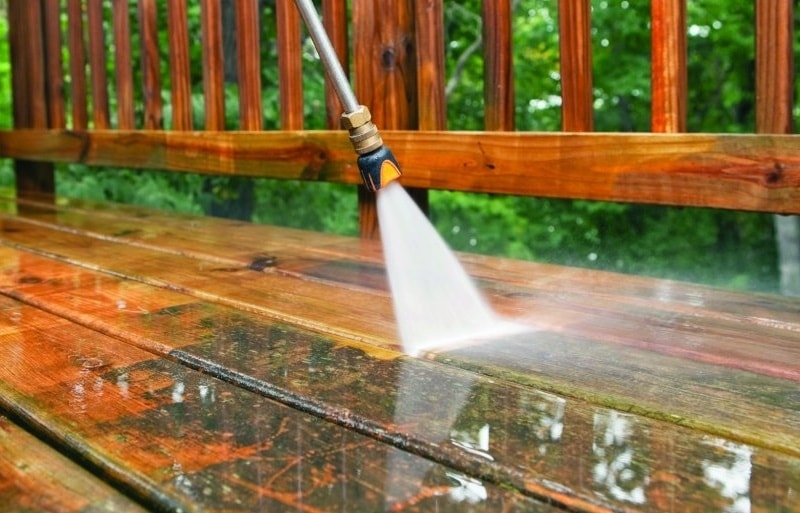Pressure washing is one of the most effective ways to restore your home’s curb appeal. However, using the wrong technique can cause expensive damage. From stripping paint to forcing water behind siding, mistakes can cost more than the cleaning itself. Knowing these risks — and how to prevent them — ensures you get professional-quality results without harming your property.
Why Knowing Pressure Washing Mistakes Matters
Pressure washing works by blasting water at high pressure to remove dirt, mold, mildew, and stains. While it’s powerful, that same force can easily damage surfaces. Pressure washer damage prevention starts with understanding safe techniques and proper equipment settings. Without this knowledge, you risk:
- Etching concrete or brick.
- Stripping paint unintentionally.
- Forcing moisture into your home’s structure.
- Injuring yourself or others.
Learning how to avoid these mistakes ensures a clean, fresh exterior without hidden repair bills.
Mistake #1 – Using the Wrong Nozzle
Proper nozzle selection for pressure washers is crucial for controlling water pressure and spray pattern. Nozzles are typically color-coded:
| Nozzle Color | Spray Angle | Best For | Risk Level |
|---|---|---|---|
| Red (0°) | Direct stream | Tough stains on metal or concrete | High – can cut surfaces |
| Yellow (15°) | Narrow fan | Paint prep, heavy cleaning | Medium |
| Green (25°) | Medium fan | General cleaning (decks, siding) | Low |
| White (40°) | Wide fan | Windows, delicate surfaces | Very low |
| Black (65°) | Low pressure | Applying detergents | None |
Choosing the wrong nozzle can gouge wood, etch stone, or dent siding. Always match the nozzle to the surface you’re cleaning and start with a wider spray for safety.
Mistake #2 – Applying Too Much Pressure
More pressure isn’t always better. Surfaces like vinyl siding, stucco, and painted wood require safe pressure washing techniques at 1,200–1,500 PSI. Concrete or brick can handle higher pressure, around 2,500–3,000 PSI.
If you don’t adjust pressure properly, you risk stripping paint with power washing or damaging soft surfaces. Use a machine with adjustable pressure settings or change nozzles to control force.
Mistake #3 – Holding the Wand Too Close
Holding the spray tip too close concentrates force in one small area. This can:
- Cut wood fibers on decks.
- Pit and crack masonry.
- Leave permanent streaks on siding.
Keep the nozzle 12–18 inches away from most surfaces. Move in slow, even passes, overlapping each stroke to avoid uneven cleaning.
Mistake #4 – Ignoring Surface Preparation
Skipping preparation is a common DIY error. Prepping ensures better results and helps protect surfaces. Steps include:
- Clear debris: Sweep away loose dirt, sticks, and leaves.
- Pre-soak surfaces: Helps loosen grime and prevent damage.
- Apply detergent: Use cleaners designed for pressure washers to dissolve mildew and stains.
- Cover sensitive areas: Protect plants, outdoor outlets, and windows.
Preparation improves cleaning efficiency and reduces the risk of damage.
Mistake #5 – Overlooking Water Damage Risks
High-pressure water can travel behind siding, into vents, or under roofing materials, leading to rot and mold. To prevent water damage during pressure washing:
- Spray at a downward angle on siding.
- Avoid directing water upward into soffits or vents.
- Keep water away from window seals and door frames.
Moisture trapped inside walls can take weeks to dry, causing hidden structural issues.
Mistake #6 – Skipping Safety Measures
Pressure washersPressure Washing Salem Oregon can be dangerous if mishandled. A jet of water at 2,000 PSI can cut skin. To stay safe:
- Wear protective goggles and gloves.
- Use non-slip shoes.
- Avoid ladders — use extension wands instead.
- Never spray near electrical outlets.
These precautions protect you from injuries and help maintain control over the high-pressure stream.
Mistake #7 – Using the Wrong Cleaning Solutions
Using bleach or harsh chemicals without dilution can harm plants, discolor siding, and corrode metals. Choose eco-friendly cleaning products labeled safe for pressure washers. After cleaning, rinse thoroughly to remove residue that can attract dirt.
Safe Pressure Washing Techniques to Follow Instead
Replacing bad habits with safe pressure washing techniques will make your cleaning more effective and less risky:
- Test settings on a small, hidden area first.
- Use the lowest effective pressure.
- Keep the wand moving to avoid concentrated damage.
- Work in sections from top to bottom to prevent streaking.
This approach gives even results and prolongs the life of your home’s exterior materials.
When to Hire a Professional Pressure Washing Service
Some jobs are better left to experts, especially if:
- You’re cleaning a multi-story home.
- Surfaces are heavily soiled or mold-covered.
- You need specialized treatments like soft washing.
Professionals bring the right equipment, insurance, and experience to ensure safe, thorough cleaning. While DIY might cost less upfront, mistakes can make professional repair costs far higher.
Key Takeaways for Damage-Free Pressure Washing
Avoiding these mistakes can save you thousands in repairs and keep your property looking its best. Remember:
- Choose the correct nozzle and pressure setting.
- Maintain safe spraying distances.
- Prep surfaces before cleaning.
- Protect against water intrusion.
- Prioritize personal safety.
By following these guidelines, you’ll get professional-level results while keeping your home’s surfaces safe and intact.


